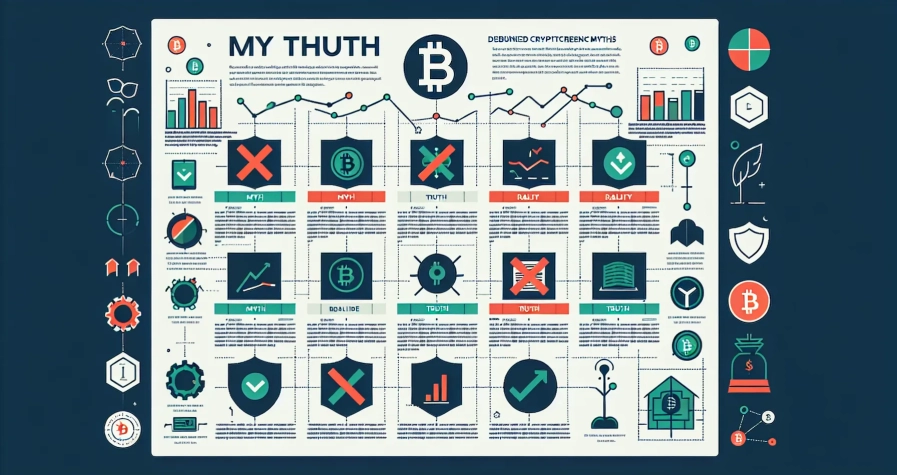Making a first cryptocurrency transfer can feel daunting. Unlike traditional banking systems where mistakes can often be reversed with a quick call to customer service, crypto operates in a fundamentally different way. Once coins leave a wallet, there’s no “undo” button, no helpline to ring, and no safety net to catch errors. For newcomers, this reality can be nerve-wracking, but it doesn’t have to be.
The good news? With proper preparation and a clear understanding of the process, anyone can transfer crypto safely and confidently. The key lies in knowing what to check, which steps to follow, and which common pitfalls to avoid. This guide walks through everything a first-time sender needs to know to move digital coins from one wallet to another without losing a single satoshi along the way.
Key Takeaways
- Always verify the recipient’s wallet address and network before making your first crypto transfer to avoid irreversible mistakes.
- Start with a small test transaction to confirm compatibility and address accuracy before sending larger amounts of cryptocurrency.
- Crypto transfers are irreversible by design—there’s no undo button or customer service to reverse errors once funds are sent.
- Sending coins to the wrong blockchain network is the most common mistake, so confirm both sender and recipient use the same network.
- Use secure devices and enable two-factor authentication to protect your crypto transfer from malware and unauthorised access.
- Save your transaction ID after completing the transfer as proof and for troubleshooting if any issues arise with the recipient.
Understanding the Basics of Crypto Transfers

Before pressing that ‘send’ button, it helps to understand what’s actually happening behind the scenes. Crypto transfers aren’t like bank transfers, they’re powered by blockchain technology, a decentralised public ledger that records every transaction across a network of computers.
When someone sends cryptocurrency, they’re essentially broadcasting a message to this network saying, “I’m moving X amount of coins from my address to this recipient’s address.” Miners or validators then verify the transaction, ensure the sender has sufficient funds, and add it to the blockchain. Once confirmed, the transfer is complete and permanently recorded.
This process might sound complex, but for users, it typically involves just a few simple steps: entering a recipient address, selecting the correct network, specifying an amount, and confirming the transaction. The blockchain handles the rest.
What Happens During a Crypto Transaction
When initiating a transfer, the sender opens their wallet application and enters the recipient’s wallet address, a long string of alphanumeric characters unique to that wallet. They then select which network or blockchain to use (more on why this matters shortly) and input the amount they wish to send.
After hitting send, the transaction enters a ‘pending’ state. During this time, the blockchain network verifies that the sender has enough coins and that the transaction follows the network’s rules. Depending on network congestion and the fee paid, this verification can take anywhere from a few seconds to several minutes, or occasionally longer.
Once the network confirms the transaction, the coins move from the sender’s wallet to the recipient’s. Both parties can view the transaction on a blockchain explorer using the unique transaction ID (often called a TxID or hash).
Why Crypto Transfers Are Irreversible
This is perhaps the most crucial aspect to grasp: crypto transactions cannot be reversed once confirmed. There’s no chargeback mechanism, no way to recall funds, and no intermediary who can step in to fix mistakes.
This immutability is by design. Blockchain technology prioritises security and decentralisation, which means removing the ability for any central authority, or even the sender, to alter transactions after they’ve been validated. Whilst this protects against fraud and ensures the integrity of the ledger, it also means mistakes have permanent consequences.
Send coins to the wrong address? They’re gone. Select the wrong network? Those funds are typically unrecoverable. This unforgiving nature is precisely why first-time senders must approach transfers with care and follow a methodical process.
Essential Pre-Transfer Checks
The best way to avoid costly mistakes is to complete thorough checks before initiating any transfer. Think of this as the pre-flight checklist pilots use, boring, perhaps, but absolutely essential.
Three critical elements require verification: the recipient’s wallet address, the network or blockchain being used, and wallet compatibility. Getting any of these wrong can result in lost funds, so it’s worth taking the extra minute to double-check.
Verify the Correct Network or Blockchain
Many people don’t realise that cryptocurrencies can exist on multiple networks. For example, a stablecoin like USDT can be sent on Ethereum, Tron, Binance Smart Chain, and several other blockchains. Each network has its own addresses, fees, and transaction speeds.
Sending coins on the wrong network is one of the most common ways people lose funds. If someone sends USDT on the Ethereum network to an address that only supports Tron-based USDT, those coins will likely vanish into the digital void.
Before sending, confirm which network the recipient’s wallet supports. If transferring between exchanges or wallets, both platforms should clearly display which networks they accept for each cryptocurrency. When in doubt, contact the recipient or check the receiving platform’s deposit instructions.
Confirm Wallet Address Compatibility
Even if the network is correct, wallet address compatibility matters. Different cryptocurrencies use different address formats, and sending Bitcoin to an Ethereum address (or vice versa) will result in loss of funds.
Most modern wallets prevent this by rejecting incompatible addresses, but not all do. The sender should verify that both their wallet and the recipient’s wallet support the specific coin being transferred on the chosen blockchain.
Also, some wallets generate new addresses for each transaction for privacy reasons. If the recipient provides an address, confirm it’s current and active. Using an old or deprecated address format can sometimes cause issues, depending on the cryptocurrency.
Step-by-Step Guide to Making Your First Transfer
With the basics understood and pre-transfer checks complete, it’s time to walk through the actual process. Following these steps in order dramatically reduces the risk of error.
Double-Check the Recipient Address
Cryptocurrency addresses are long, complex strings of letters and numbers, often 26 to 35 characters or more. A single incorrect character will send funds to the wrong address, and there’s no way to retrieve them.
Most people copy and paste addresses rather than typing them manually, which is sensible. But, there’s a catch: malware exists that can detect when someone copies a crypto address and automatically replace it with the attacker’s address. By the time the victim pastes it into their wallet, they’re unknowingly sending funds to a hacker.
To protect against this, always verify at least the first and last few characters of the address after pasting. Some users even check a middle section for good measure. If sending to an address multiple times, consider saving it in the wallet’s address book after the first successful transaction, but still verify it each time.
Start With a Small Test Transaction
This is perhaps the single most important piece of advice for first-time senders: always send a small test amount first.
Yes, it means paying transaction fees twice. Yes, it takes extra time. But the peace of mind, and potential savings, are worth it. Sending £5 or £10 worth of crypto as a test allows confirmation that everything works as expected: the address is correct, the network is compatible, and the recipient can access the funds.
Once the test transaction is confirmed and the recipient verifies receipt, the sender can confidently proceed with the full amount. This simple step has saved countless people from losing significant sums to avoidable errors.
Review Transaction Fees and Speed
Transaction fees (often called gas fees or network fees) vary widely depending on the blockchain and current network congestion. During busy periods, fees can spike dramatically.
Before confirming a transfer, review the estimated fee and decide whether it’s acceptable. Most wallets display the fee in both the cryptocurrency and the fiat equivalent. Some wallets offer options to adjust the fee, trading lower cost for slower confirmation time or higher cost for faster processing.
For first-time transfers, it’s generally wise to accept the standard or even slightly elevated fee to ensure reasonable confirmation speed. The last thing a nervous first-timer needs is a transaction stuck in pending status for hours.
Also, note that the fee is deducted separately from the amount being sent. If someone wants to send exactly £100 worth of crypto, they’ll need to account for the fee on top of that amount, or adjust the send amount slightly lower so the total including fees equals their available balance.
Common Mistakes That Lead to Lost Coins
Even with careful preparation, certain mistakes crop up repeatedly. Being aware of these pitfalls helps first-time senders avoid them.
Sending to the Wrong Network
As mentioned earlier, this is the most frequent cause of lost funds. It happens when someone selects, say, the Binance Smart Chain network when the recipient’s wallet only supports Ethereum.
The transaction will often complete successfully from the sender’s perspective, the coins leave their wallet, and the blockchain confirms the transfer. But the recipient never receives anything because their wallet isn’t monitoring that particular blockchain.
In some cases, funds sent to the wrong network can be recovered, but it typically requires technical knowledge, access to private keys, and sometimes the assistance of the receiving platform’s support team. Often, recovery simply isn’t possible.
The fix is straightforward: always confirm the network with the recipient before sending, and double-check the selected network in the wallet interface matches what was agreed.
Copy-Paste Errors and Address Typos
Even when using copy-paste, errors can occur. Sometimes a space or extra character gets included accidentally. Other times, as noted earlier, malware swaps the address entirely.
Address typos are rare when copying and pasting, but they’re catastrophic when they happen. Some cryptocurrencies include checksums in their addresses, built-in error detection that causes wallets to reject addresses with typos. Bitcoin and Ethereum both use this feature, which provides a helpful safety net.
But, checksum protection isn’t universal, and it won’t catch a correctly formatted address that simply isn’t the intended recipient’s. This is why visually verifying the address after pasting is essential, particularly the first and last several characters.
Another good practice: if possible, use QR codes instead of manual copy-paste. Scanning a QR code eliminates typing and copy-paste risks, though users should still verify the address displayed in their wallet matches the one expected.
Security Best Practises for Crypto Transfers
Beyond the mechanics of the transfer itself, maintaining good security hygiene protects against threats that could compromise funds.
Use Secure Devices and Connections
Never initiate crypto transfers from public computers, shared devices, or unsecured Wi-Fi networks. Public Wi-Fi, in particular, can be vulnerable to man-in-the-middle attacks where hackers intercept data being transmitted.
Ideally, transfers should be made from a personal device with up-to-date antivirus software, using a secure home network or mobile data connection. If accessing a web-based wallet, ensure the URL is correct and uses HTTPS encryption, phishing sites that mimic legitimate wallet interfaces are common.
Keep private keys and seed phrases absolutely confidential. These grant complete access to a wallet, and anyone who obtains them can drain funds immediately. Legitimate support teams will never ask for this information.
For larger amounts, consider using a hardware wallet, a physical device that stores private keys offline and signs transactions without exposing those keys to internet-connected devices. Whilst this represents an additional investment, it’s the gold standard for security.
Enable Two-Factor Authentication
For wallets and exchanges that support it, enabling two-factor authentication (2FA) adds a crucial extra layer of security. Even if someone obtains login credentials, they won’t be able to access the account or authorise transfers without the second factor, typically a code from an authenticator app or sent via SMS.
Authenticator apps like Google Authenticator or Authy are generally more secure than SMS-based 2FA, as they’re less vulnerable to SIM-swapping attacks. Most major exchanges and many wallet applications support app-based 2FA.
When setting up 2FA, save the backup codes in a secure location. If the device with the authenticator app is lost, those codes provide a way to regain account access. Without them, account recovery can be difficult or impossible.
What to Do After Completing Your Transfer
Once the transfer is initiated, the work isn’t quite finished. A few post-transfer steps ensure everything went smoothly and provide documentation for future reference.
First, wait for the transaction to be confirmed on the blockchain. Confirmation times vary, Bitcoin typically takes 10-60 minutes depending on network congestion and fees, whilst networks like Solana or Litecoin confirm much faster. Most wallets display the transaction status, showing whether it’s pending or confirmed.
Next, verify that the recipient has received the funds. If transferring to another person, ask them to check their wallet. If sending to an exchange or another personal wallet, check that platform’s transaction history or wallet balance. Sometimes there’s a slight delay between blockchain confirmation and the funds appearing in the recipient’s interface, particularly on exchanges that require multiple confirmations before crediting deposits.
Save the transaction ID. This unique identifier serves as proof of the transfer and is essential for troubleshooting if any issues arise. Most blockchain explorers allow anyone to look up a transaction using its ID, showing details like the amount sent, fee paid, number of confirmations, and exact timestamp. If the recipient claims they never received funds, the transaction ID provides verifiable evidence of what happened.
Finally, record the transaction details for personal records, especially if the transfer has tax implications. Many jurisdictions treat cryptocurrency transfers as taxable events, and maintaining accurate records simplifies reporting at tax time.
Conclusion
Making a first crypto transfer doesn’t have to be intimidating. Yes, the irreversible nature of blockchain transactions demands care and attention, but by understanding the fundamentals, completing essential pre-transfer checks, and following a methodical step-by-step process, anyone can send cryptocurrency safely.
The golden rules bear repeating: always verify the recipient address and network, start with a small test transaction, and never rush the process. Most lost coins result from avoidable errors, wrong networks, address typos, or skipped verification steps. Taking an extra minute to double-check everything can save significant frustration and financial loss.
As comfort grows with the process, transfers become routine. But even experienced users continue following these best practises, because in the world of cryptocurrency, there are no do-overs. The blockchain doesn’t forgive mistakes, so it’s far better to prevent them in the first place.
For those about to make their first transfer: take a breath, follow the steps outlined here, and start with that test transaction. The crypto ecosystem offers remarkable possibilities, and learning to transfer funds safely is the essential first step toward exploring them with confidence.
Frequently Asked Questions
Why can’t I reverse a crypto transfer if I make a mistake?
Crypto transactions are irreversible by design due to blockchain technology’s decentralised nature. Once confirmed, no central authority or individual can alter the transaction, which protects against fraud but means mistakes like sending to wrong addresses result in permanent loss of funds.
What happens if I send crypto to the wrong network?
Sending crypto to the wrong network is a common cause of lost funds. The coins leave your wallet but never reach the recipient because their wallet isn’t monitoring that blockchain. Recovery is sometimes possible but requires technical expertise and often isn’t feasible.
How long does a crypto transfer take to complete?
Confirmation times vary by blockchain and network congestion. Bitcoin typically takes 10–60 minutes, whilst networks like Solana or Litecoin confirm much faster, often within seconds to minutes. Higher transaction fees can speed up processing during busy periods.
Should I always send a test transaction first when transferring crypto?
Yes, sending a small test amount first is highly recommended, especially for first-time transfers. Although it means paying fees twice, it confirms the address, network compatibility, and recipient access work correctly before sending larger amounts, potentially saving significant losses.
What is a transaction ID and why do I need it?
A transaction ID (TxID or hash) is a unique identifier for your crypto transfer recorded on the blockchain. It serves as proof of the transaction and allows you to track its status using blockchain explorers, which is essential for troubleshooting or verifying receipt.
Can malware change my copied crypto wallet address?
Yes, clipboard hijacking malware can detect when you copy a crypto address and replace it with an attacker’s address. Always verify at least the first and last several characters of the pasted address before sending to protect against this threat.








